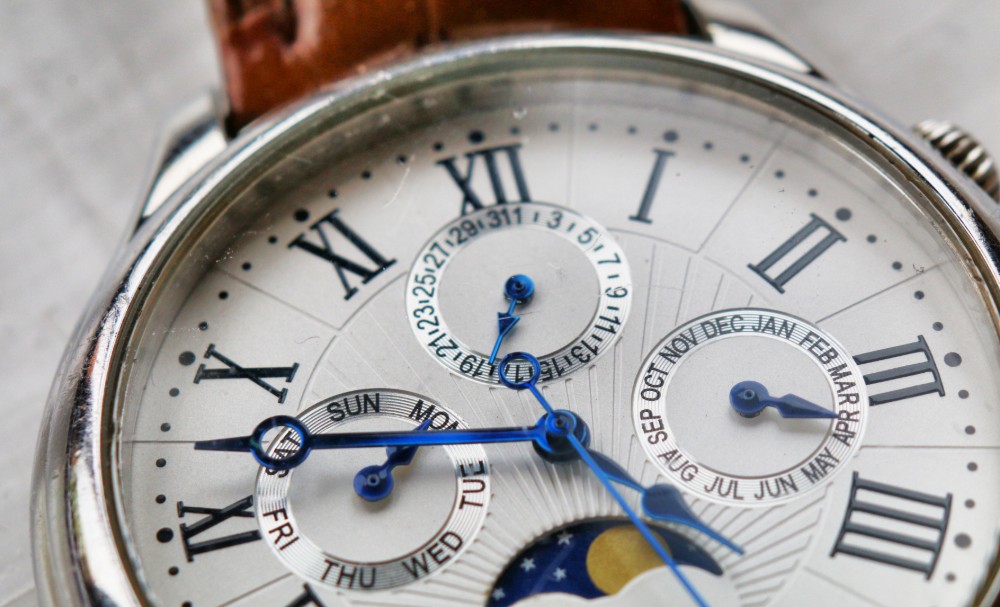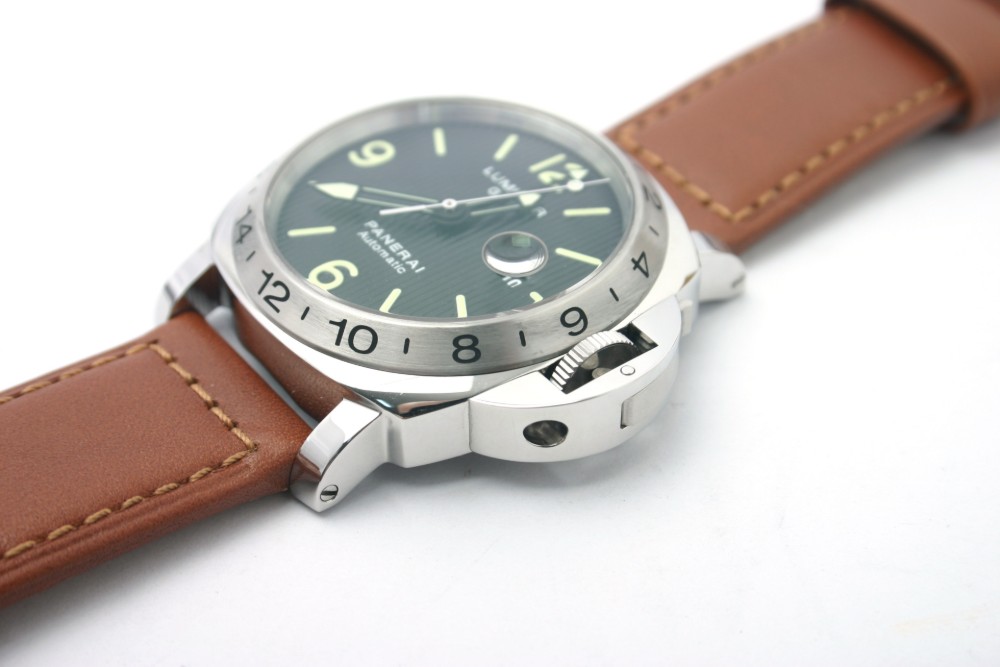The Parts of a Watch: Getting to Know Your Timepiece Inside and Out
August 25th, 2019

A watch is a remarkable piece of art and science, crafted with both aesthetic and mechanical considerations in mind. Watchmaking has always required a design in which all parts come together to make a beautiful whole that’s greater than the sum of its—well, parts.
But in many cases, new watch owners may not know about all the parts that are described when a jeweler discusses timepieces. What’s the difference between the case and the dial? Or the movement and complications? Well, have no fear! Rogers Jewelry Co. is here to help. Today, we’re going to discuss the various important parts that make up a watch, from inside to outside.
The Case and Bezel
The case is, as the name implies, the case in which the moving parts of the watch are kept and protected from the elements. In the modern age, cases are usually built from ultra-durable materials like stainless steel and ceramics designed by horologists like TAG Heuer. This keeps them from deforming or getting damaged by daily wear.
The bezel is a ring that sits atop the case and connects the crystal to it. This is usually the part where designers feel most comfortable adding gold and more fragile materials like diamond.
The Movement
While the case is the part of the watch that’s most visible, the movement is the heart of a watch that makes the hands turn. A movement can be powered by kinetic or mechanical energy, where turning the crown or a ratcheting weight reserves power in the mainspring; or by an electrical battery that causes a quartz crystal to vibrate. The latter, quartz movements, were first devised by Seiko in the 1970s and provide a democratic alternative to the top-shelf nature of mechanical watches.

The Dial
The dial is the “presentation” of the watch, where the hands and numerals are kept. Traditionally made from enamel or brushed metal, a dial can be made from more exotic materials because they’re protected on all sides by the case and crystal. MICHELE watches, for example, choose materials like iridescent mother of pearl. Other designers choose the “skeleton” design, where the gorgeous watch engineering and the movement of the gears is completely visible.
The Complications
Complications are unique features that designers can add to their watches to give them extra use. They’re displayed on the dial and range from chronographs (stop watches) to subdials on the face which can track alternative measurements like dates or seconds. There are more exotic touches that designers can add, including perpetual calendars, moon phase trackers, and power reserve.
The Crystal
The crystal is the dome or pane that sits above the dial of a watch. There are three primary materials from which the crystal is built: acrylic, mineral, and sapphire. Acrylic plastic is the least expensive and the least durable, but it doesn’t shatter or crack, and small scratches can be buffed out by skilled watchmakers. “Mineral” crystals are made from chemically treated glass, making them very hard and damage-resistant. Sapphire crystals are made from panes of corundum, which is colorless sapphire. A 9 on the Mohs scale, corundum is only slightly softer than diamonds. They’re extremely durable, but can very rarely chip or shatter, causing crystal pieces to fall into the movement.
Find Luxury Timepieces and More at Rogers Jewelry Co.
With all this in mind, you’ve now got a better idea of how your watch keeps ticking along! Remember that watches are very sensitive pieces of machinery, and it’s important to regularly take your favorite timepiece into a trustworthy jeweler to keep it maintained, cleaned, and repaired.
If you’re interested in purchasing a new timepiece, check out the watch finder on the Rogers Jewelry Co. website, contact us through our website, or visit us at any of our eight Superstore locations in central California and Reno, Nevada.